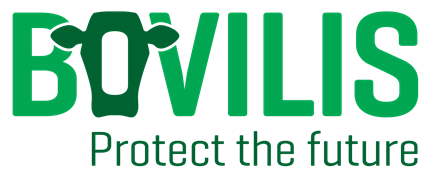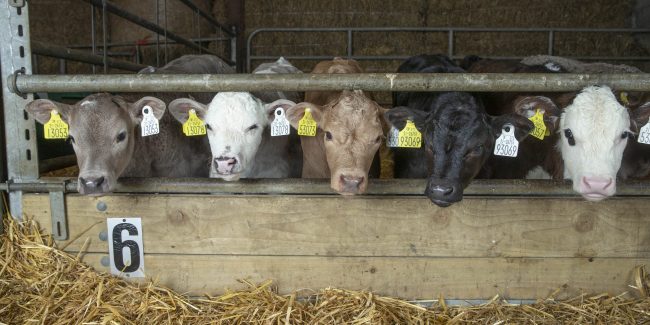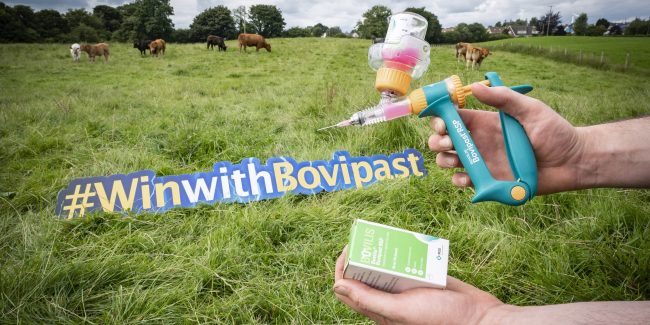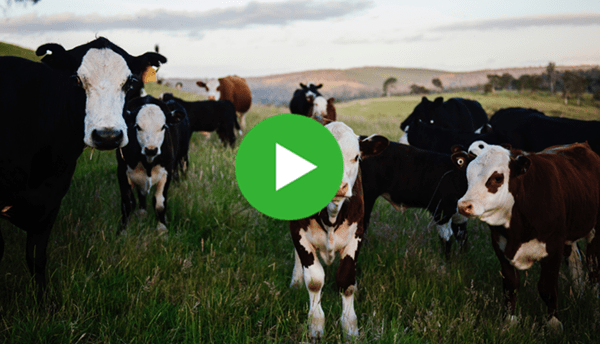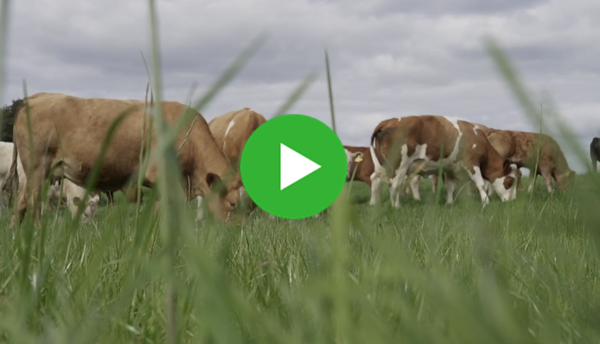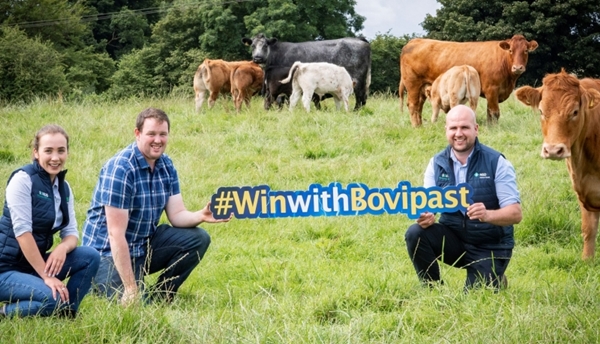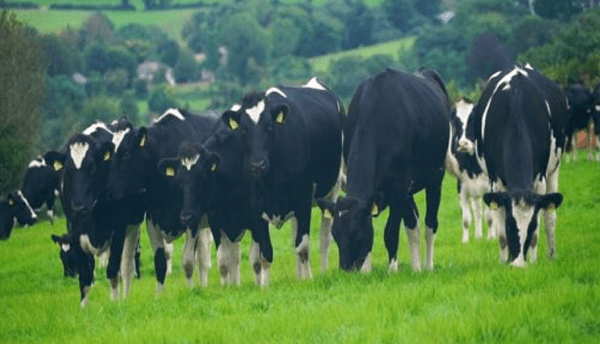

NEWS
Tackling coccidiosis in calves in Co. Tipperary
24th February 2022
TAGS
Coccidiosis is an increasingly prominent disease in young calves and according to Eamon O’Connell from Summerhill Veterinary Clinic in Tipperary, farmers must be extra vigilant, particularly where hygiene is poor.
“When we started our practice 15 years ago, coccidiosis in calves was pretty much unheard of, whereas now, it is one of the main causes of disease that we are seeing on farm. Failure to control the disease can have a huge impact on a dairy farm, leading to massive labour costs and stress, not to mention the reduction in daily live-weight gain and thrive in the calves,” stated Eamon.
One farmer who witnessed the impact of coccidiosis on farm is dairy farmer, Shane Hanrahan, who is milking 110 cows, in Nenagh, Co. Tipperary. Hear Shane’s story in the video below.
“Historically, we had issues with coccidiosis when calves were turned out to grass. Following the advice of my vet, Eamon O’Connell, we implemented a rigorous preventative strategy using strict hygiene protocols and the oral solution, Vecoxan.
“It has worked really well for us. We’ve had no calf scour and calf health has never been better,” said Shane.
Coccidiosis In Calves
Coccidiosis is a disease of the intestine and is often seen in calves ranging in age from 3 weeks to 6 months of age. The disease is caused by a tiny parasitic organism that damages the lining of the gut.
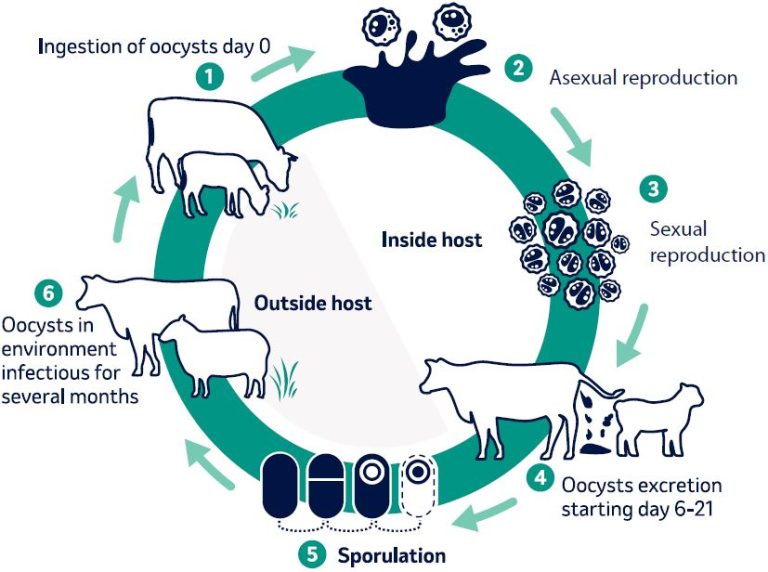
Clinical cases include watery diarrhoea, raised tail head and often the calf may be seen straining to pass faeces. More subtle signs of the disease can be decreased appetite and a reduction in daily live-weight gain.
“In Shane’s case, his calves were having issues with coccidiosis 2-3 weeks post turnout to grass. He is also seeing early cases of coccidiosis in younger calves indoors, particularly where calves are moving from individual pens to group pens and similarly, after stressful situations such as dehorning at 3-4 weeks old,” said Eamon.
Preventative Plan For Coccidiosis
“We tried other products on the market; however, Vecoxan has worked the best for us. Every calf now gets treated with Vecoxan at 4 weeks old, to prevent coccidiosis indoors, and receive a second dose at 2 weeks post turnout the to tackle the disease at pasture,” said Shane.
Vecoxan can be used as a preventative. The active ingredient, diclazuril has a short duration of action which allows exposure to the parasite and the development of natural immunity. This reduces the risk of reinfection going forward.
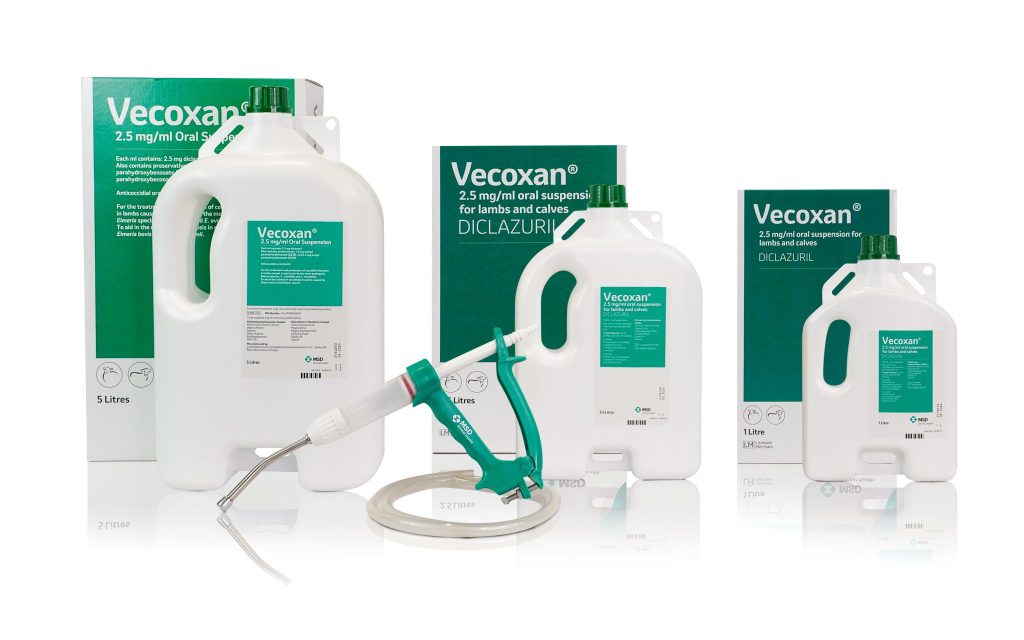
Eamon advised that the whole group are treated the same, as failure to do so could cause reinfection. If one calf is sick with coccidiosis, we must presume that a number of calves are sub clinical cases also.
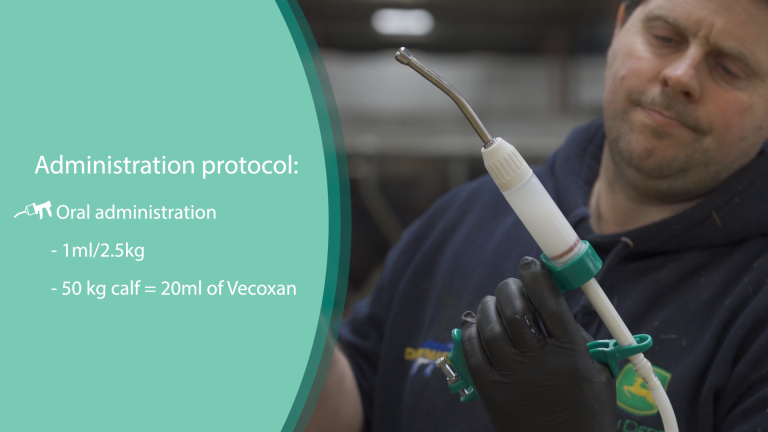
He explained, “When the calves leave the individual pens and enter group pens, they should be left for 7-10 days to gain exposure to the parasite. The whole group should then be treated with Vecoxan as a preventative.
Similarly, when calves are let outdoors, they need exposure to the parasite and after 2 weeks post turnout, the whole group should receive their second dose of Vecoxan. On farms where records are available, the whole group can be treated one week before the expected outbreak.
Vecoxan can be administered orally at a rate of 1ml per 2.5kg body weight. For example, a 50kg calf will receive 20mls of Vecoxan.
Hygiene Is Key To Disease Control
Eamonn stresses that Vecoxan alone should not be used in place of poor hygiene and a dirty environment.
“Feeding equipment and calf sheds should be cleaned and disinfected regularly and calves should be kept dry with a warm and comfortable straw bed.
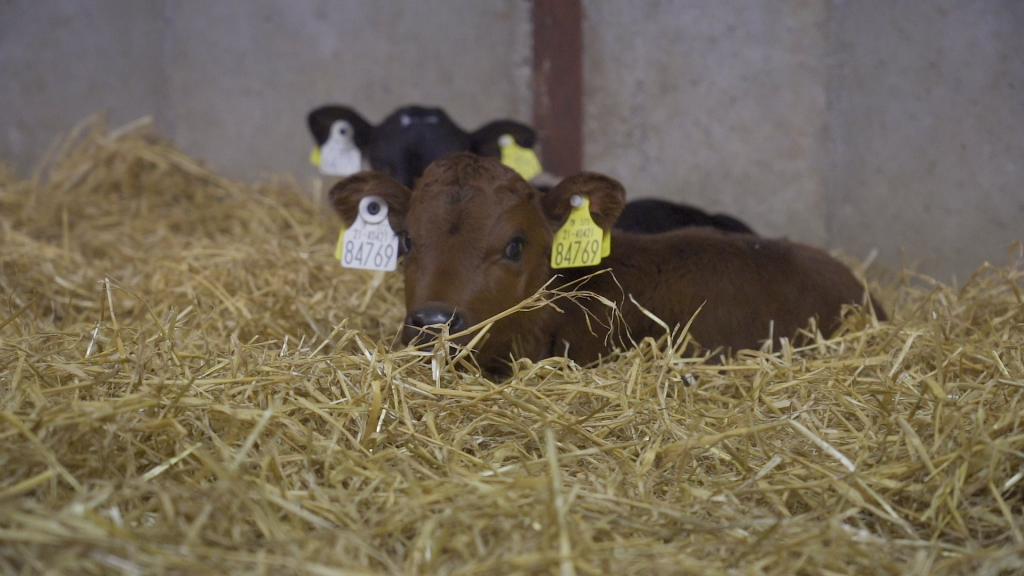
“If your calves experienced coccidiosis last year, look at the paddocks that were a source of disease and avoid them if possible.”
“Areas around water troughs and feed troughs can be a source of infection also, so make sure they are clean and dry. If the area begins to get mucky or wet, it is important to move the troughs to a new location,” stated Eamon.
Don’t Take Chances
Eamon concluded: “For farmers who suspect a case of coccidiosis on farm this spring or who have had a historic problem with the disease, it is critical to act promptly and contact your local vet to formulate a preventative plan.”
If you suspect your animals to have coccidiosis, contact your vet. They will carry out a full clinical examination and take faecal samples to confirm if it is coccidiosis. Treatment of your calves will be very much dependent on the outcome of the sample results.

Vecoxan – Added Benefits
- Vecoxan can be administered to animals of any age or any weight. It is safe to use in calves, lambs, cattle and sheep that are indoors or outdoors.
- Studies have shown that dairy heifers treated with Vecoxan achieved better average daily live-weight gains than those treated with a toltrazuril based product.
- Vecoxan is environmentally friendly as the manure from treated animals has no environmental concerns and can be safely applied to land.
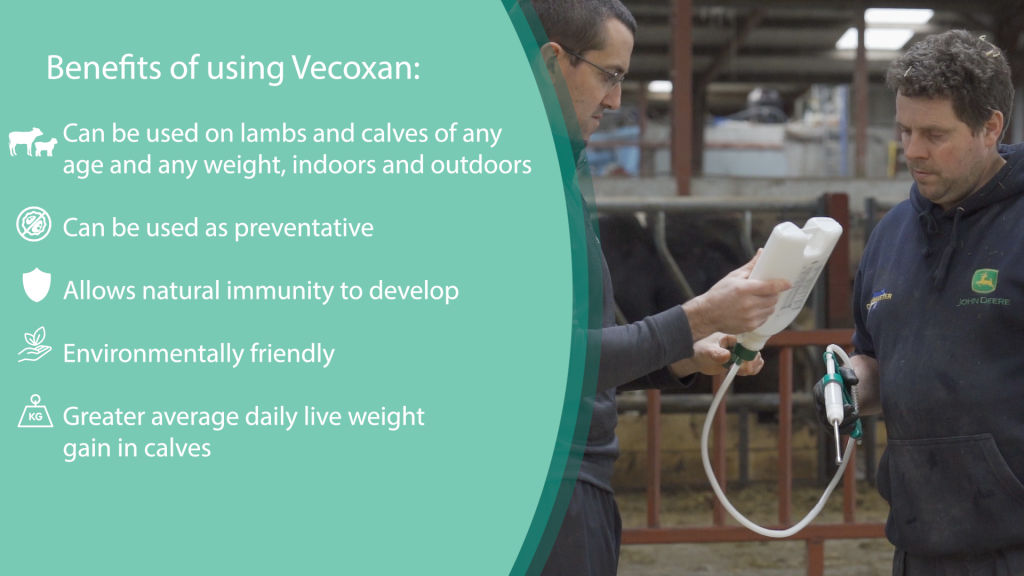
TAGS
Sign up to Bovilis® product and event information
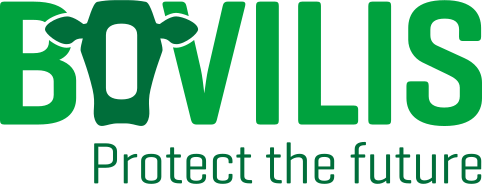
MSD Animal Health
Red Oak North, South County Business Park, Leopardstown,
Dublin 18, Ireland
vet-support.ie@msd.com
PHONE
CATTLE DISEASES
